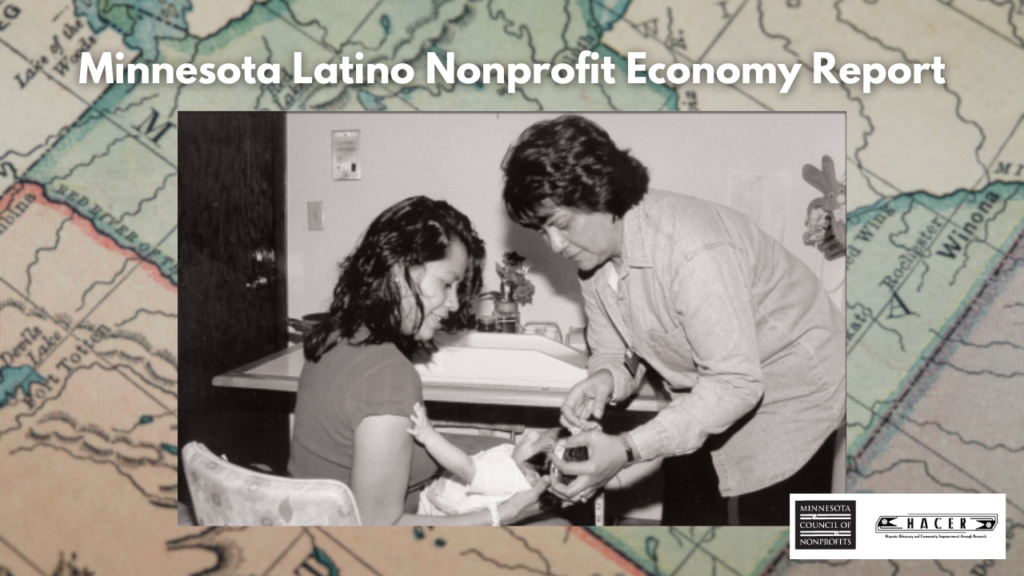
In 2000, the Minnesota Council of Nonprofits (MCN) and Hispanic Advocacy and Community Empowerment through Research (HACER) undertook a research study of Latino nonprofits in Minnesota to address a gap of information regarding the number and type of nonprofits that served the Latino community. The result was the first Latino Nonprofit Economy Report, published in September 2000.
This report is an update of the previous one, and provides a picture of the state of Minnesota’s Latino nonprofit organizations by size, location, types of services and funding sources. The report is also designed to examine the impact the nonprofit sector has on Latino communities.
Overall, the Latino population in Minnesota has grown from 132,300 in 2000 to 214,036 in 2008 (U.S. Census Bureau). This is a growth of 62 percent, a slower growth rate than reported in the previous Latino Nonprofit Economy Report in which the Latino population grew 143 percent from 54,290 to 132,300 between 1990 and 2000. These numbers most likely underestimate the actual numbers of the Latino population, since they do not include seasonal and migrant workers who reside in Minnesota.
Latino nonprofit organizations have grown in the past eight years but not at the same rate as the Latino population. In 2000, 82 Latino nonprofits were identified using two directories – the Chicano Latino Affairs Council’s “Bilingual Directory” and the Center for Urban and Regional Affair’s “Directory of Nonprofit Organizations of Color in Minnesota.” For this report, 120 nonprofits were identified and asked to participate in the research survey. This is a growth rate of 47 percent for the years between 2000 and 2008. It was in 2008 that the recession hit the United States and impacted nonprofits across the country. All three sources of giving (government, foundations and individual contributions) were simultaneously affected and all pulled back on their contributions to nonprofits. Latino nonprofits were not immune to this and many have struggled to remain operational in the past couple years. The impact of this recession on Latino nonprofits will continue to be studied.
Executive Summary
This report provides an overview of nonprofit organizations that serve the Latino community in Minnesota. The data was collected through a survey that was sent to 120 organizations. The organizations are categorized by size, location, types of services provided and funding sources.
Principal findings
• Fourteen percent of the organizations that responded to the survey were founded between 2001 and 2008.
• 1,278 people are employed by Latino nonprofits as either full-time or part-time employees. The median Latino organization had 7.5 full time staff, 2 part time staff, 30 volunteers and 11 board members.
• Latino organizations provide services in multiple activity areas; the main ones are health and human services related, crime related and legal and education related.
• Together, all responding organizations have a total operating budget of $44,784,549. Seventy-five percent of organizations rely on grants as their largest source of revenue. In comparison, only 20 percent of all nonprofits in Minnesota reported grants as their largest source of revenue in the December 2009 Current Conditions Report. Eightysix percent of respondents report personnel costs as their highest expenditure, this is similar to the general population for the sector.
